| |
|
|
| |
Canada
2018
|
|
| |
|
|
| |
|
|
| |
|
|
| |
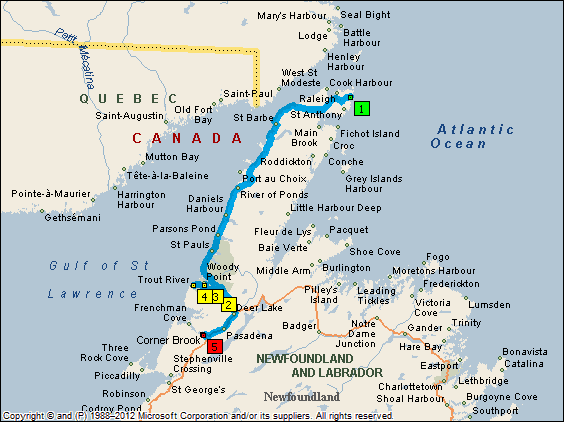 |
|
|
We decide that we
will stop by the 'commercial' Viking site on our way out to see if we can
see their replica Viking ship. We figure it's probably sitting in the water
so it might be worth a shot. |
|
|
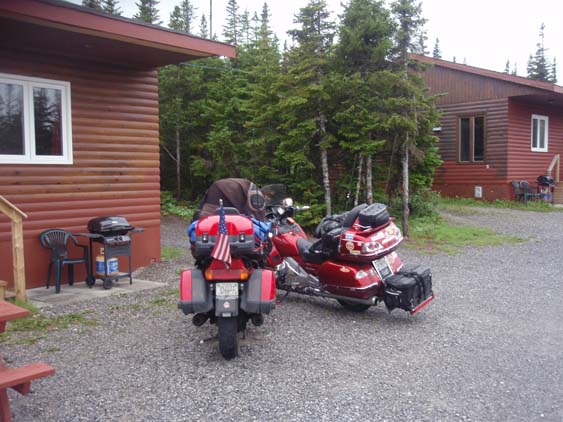 |
|
|
The ship's name
is Snorri, named after
the first white child to be born in the Americas, apart from Greenland.
|
|
|
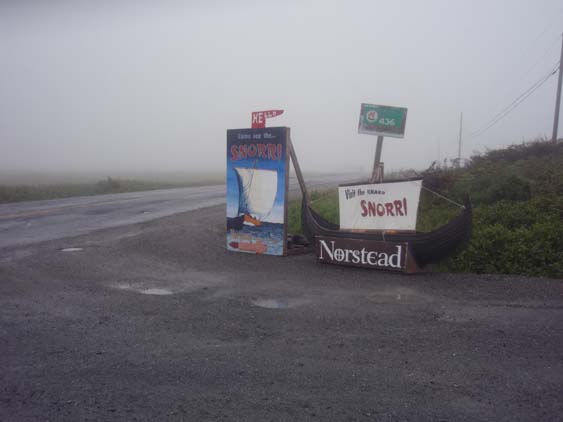 |
|
|
When
we arrive, the place is shrouded in fog and closed up tight. |
|
|
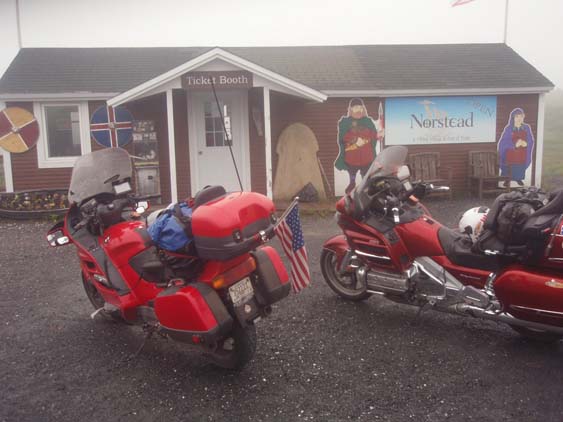 |
|
|
But the gate is
standing wide open, so we might as well take a look. The first one to greet
us is Mr. Sausage who is enjoying a morning root. Or it could be one of
his brothers, Mr. Bacon or Mr. Ham. |
|
|
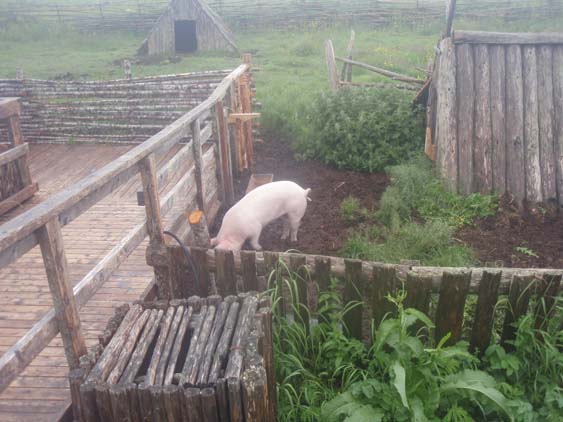 |
|
|
They have constructed
houses very similar to the historical site and we figure the ship must be
in this big one. Since we don't want to disturb anything we just wander
around a little more. |
|
|
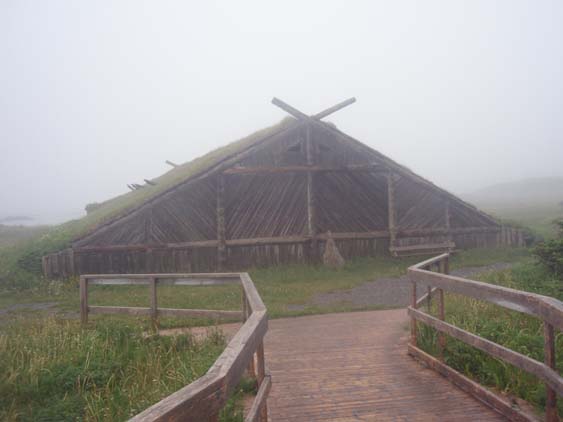 |
|
|
There are other
smaller houses on site and ... |
|
|
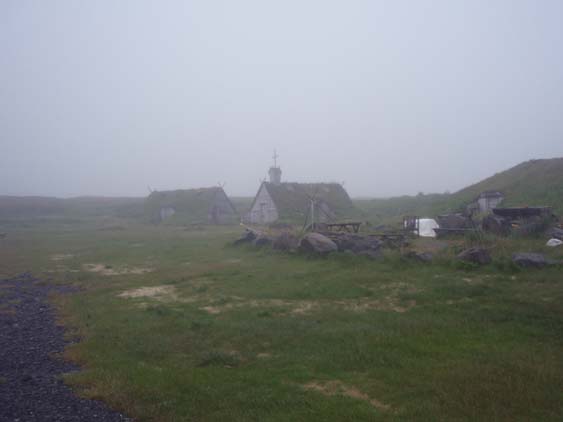 |
|
|
another big one
but that's about it. Since we obviously won't see Snorri on this trip, we
make our way back to our waiting steeds and head south. |
|
|
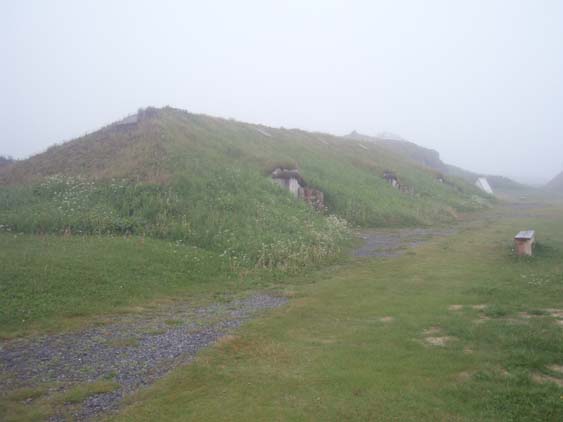 |
|
|
The fog is laying
pretty much on the water this morning and for that we are thankful. |
|
|
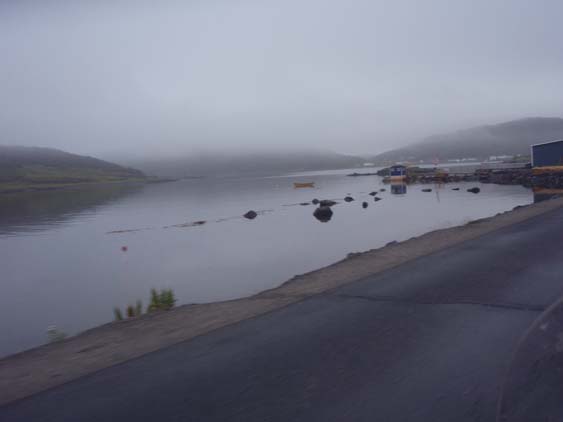 |
|
|
As we move along,
I realize that the Vikings would have easily recognized this place by the
many outlying small rock islands since they probably didn't have a wifi
connection on their ships for Google Maps. |
|
|
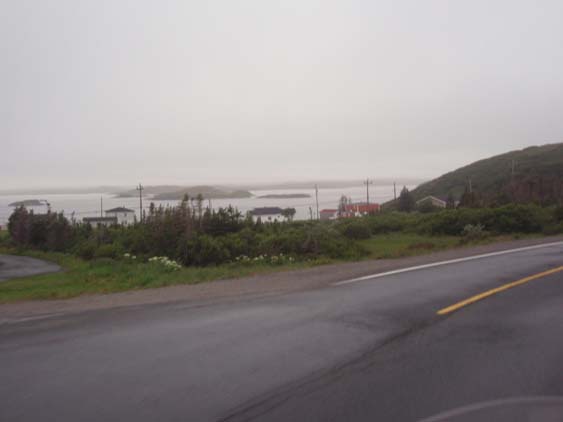 |
|
|
But soon Mr. Fog
makes his ugly appearance, deciding that he had left us alone long enough. |
|
|
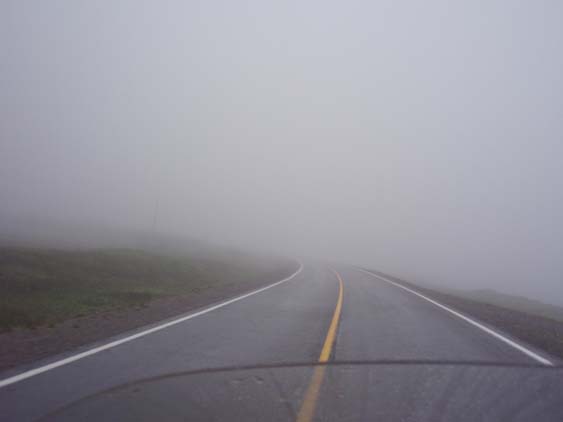 |
|
|
The weather up here
reminds me a lot of the weather in New Zealand. Because Newfoundland is
surrounded by water, it is ever changing. Here it seems the clouds are in
a battle with the winds from the water to determine who will occupy the
sky over the road. |
|
|
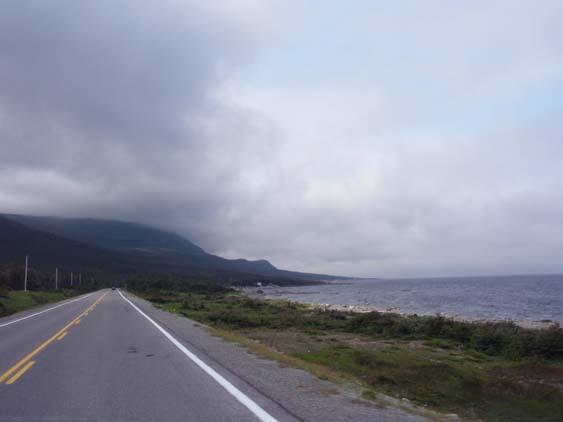 |
|
|
As we travel throughout
the province, I notice lots of firewood stacked along the road along with
... |
|
| |
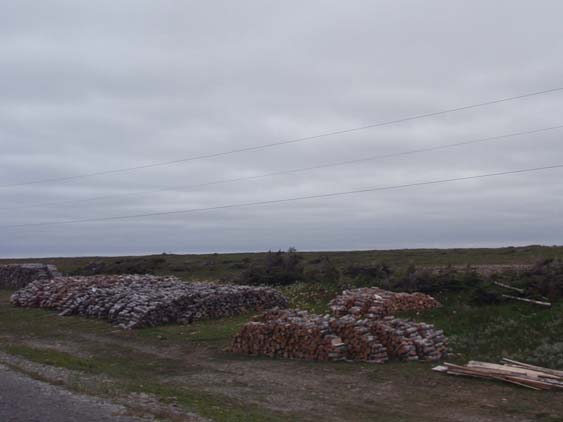 |
|
| |
lobster traps and
other such stuff. When I ask Jim about it later, he tells us that up here
people go into the woods when the weather permits and harvest what they
need. They just stack it close to the road so they can get it when they
need it. People in the area are not prone to taking what someone else has
worked hard for, especially when it can mean the difference between surviving
the winter and not. |
|
|
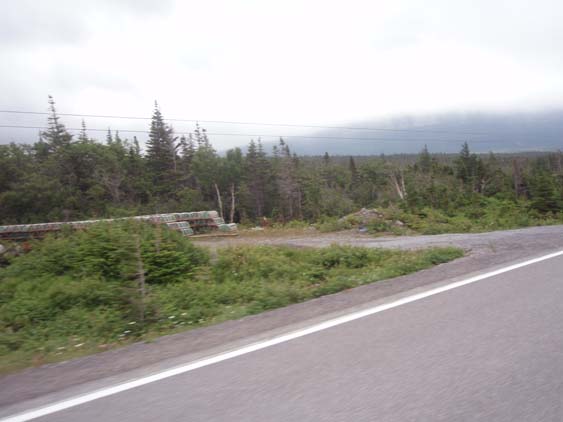 |
|
|
The views are enjoyable as we
make our way toward the Arches, a place that Jim told us about yesterday. |
|
|
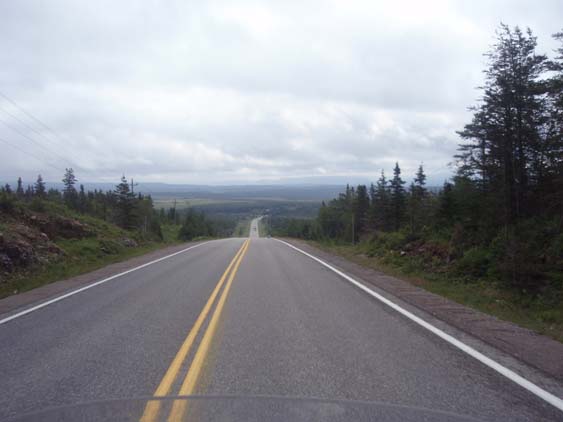 |
|
|
I almost run right
by it as I am looking out over the lovely scenery. |
|
|
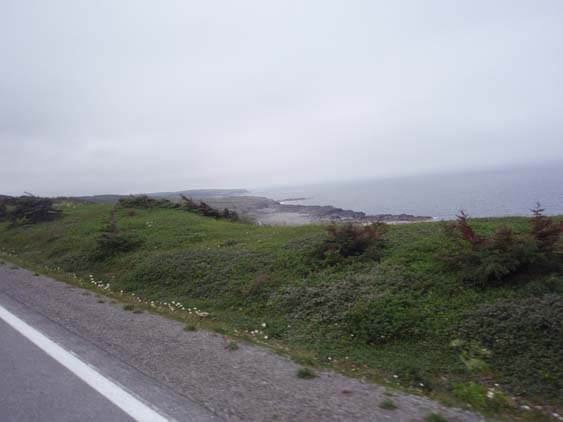 |
|
|
But we recover and make our
way to them. When the tide is out, you can walk way underneath them. |
|
|
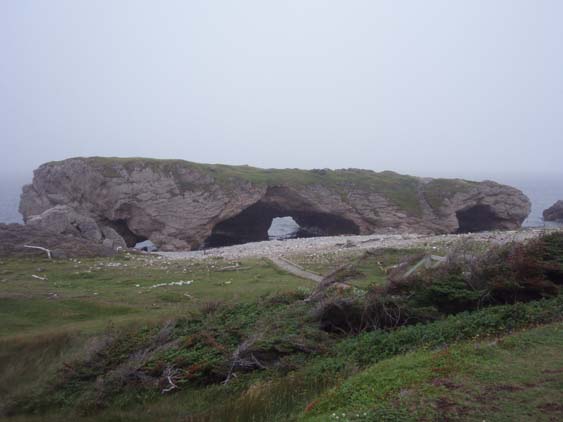 |
|
|
I can't tell if
the tide is coming in or out, but I venture a little ways under them anyway. |
|
|
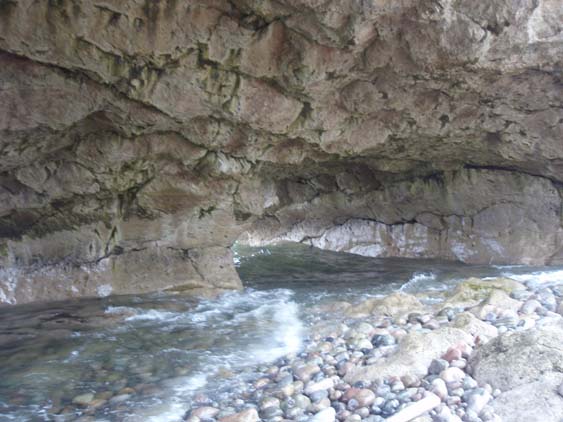 |
|
|
A lady standing nearby tells
me wistfully -
"One of them has down
fallen recently."
If that's the case, you have
to figure that eventually the waves and wind are the victors over the
rocks.
|
|
|
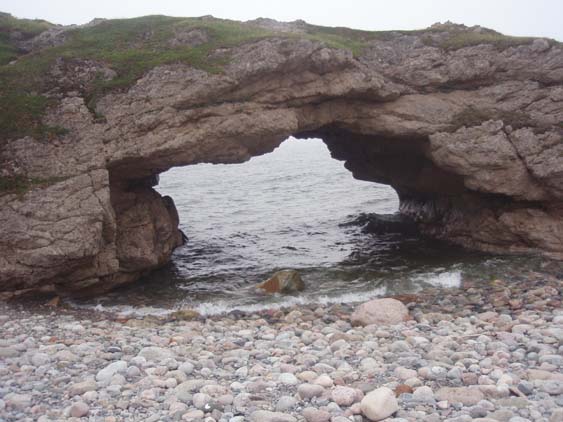 |
|
|
But I am even more
amazed by the multicolored rocks that cover most of the beach. |
|
|
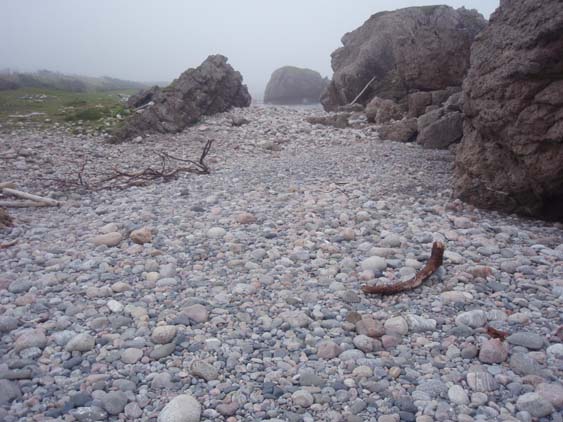 |
|
|
I know landscapers
that would pay a good price for such a colorful load of rocks like these.
There are lovely grays, pinks, silvers, and reds randomly mixed together
by the Hand of the Master Artist. |
|
|
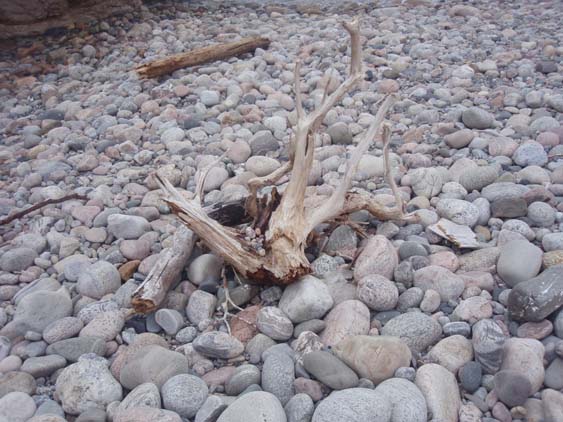 |
|
|
But
we need to be getting back to the road so Alain leads the way. |
|
| |
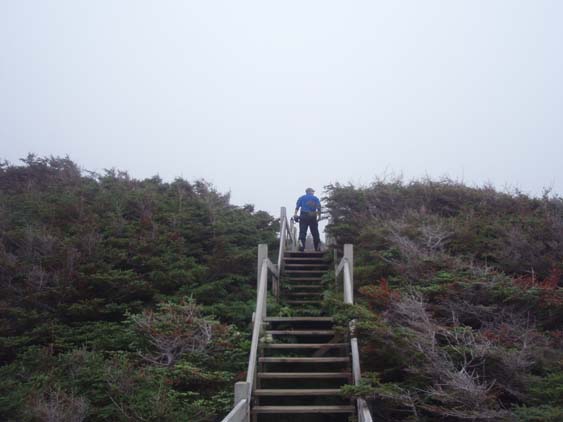 |
|
| |
As we
get to pull out, I can't help but notice the strange dead trees that line
the parking lot. I assume that the wind and the salty air is the reason
for their demise and strange posture. |
|
| |
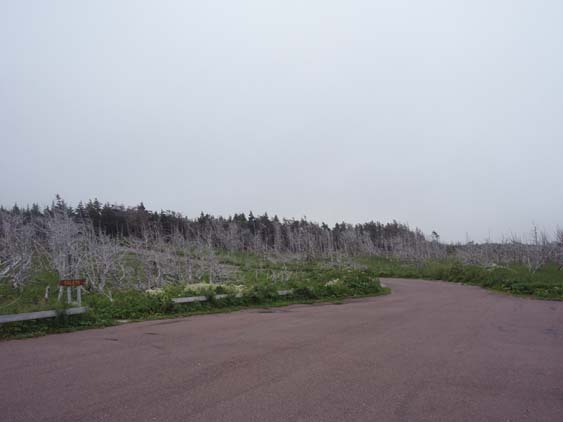 |
|
| |
Before
long we get to cross a grated bridge, but at least it's not a very long
one. |
|
|
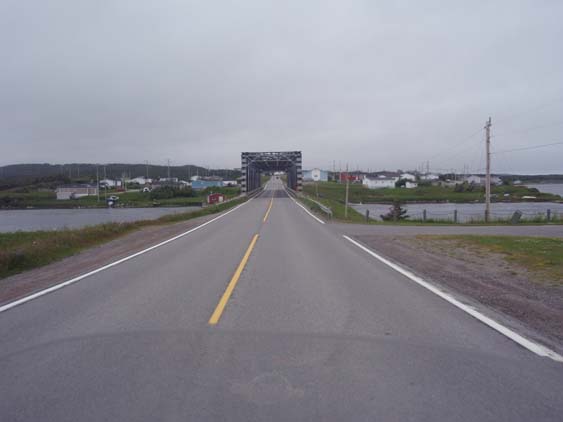 |
|
|
Most of the way
south the road plays hide and seek with the water ... |
|
|
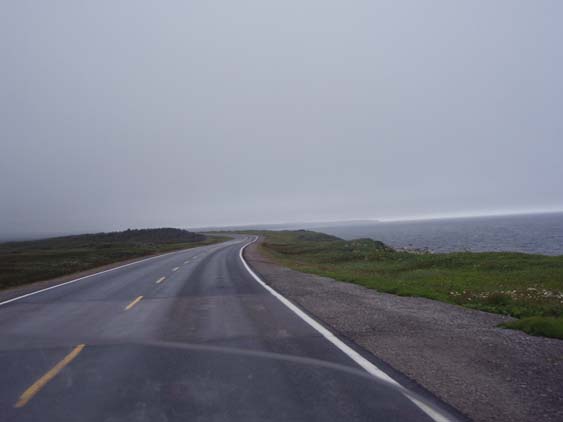 |
|
|
passing through
many small fishing villages like this one. |
|
|
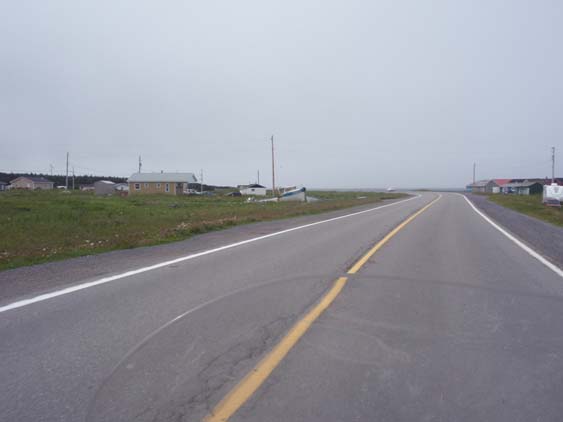 |
|
|
When you look out
around you, you realize that this is a rugged land that is inhabited by
some rugged people. |
|
|
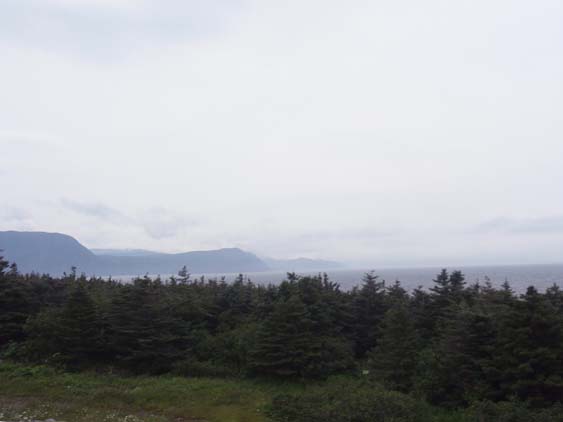 |
|
|
I thought we had
left the moose persecution behind, but this sign appears to be blaming a
poor moose because the driver crashed into something. Or else they are telling
us that the moose inspect all car crashes in this area. I sure can't tell
which is the case. |
|
|
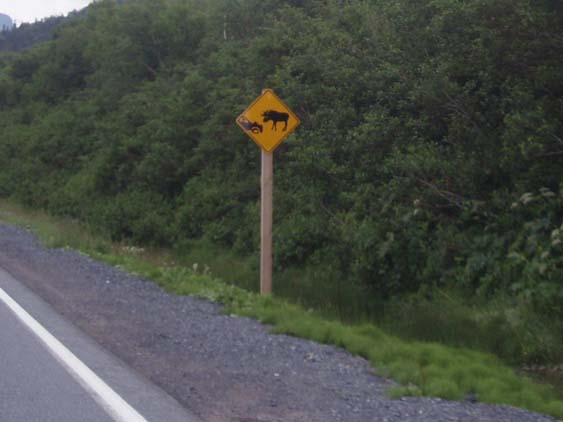 |
|
|
Sometimes we turn
a bit inland and away from the water, headed toward a rugged mountain ... |
|
|
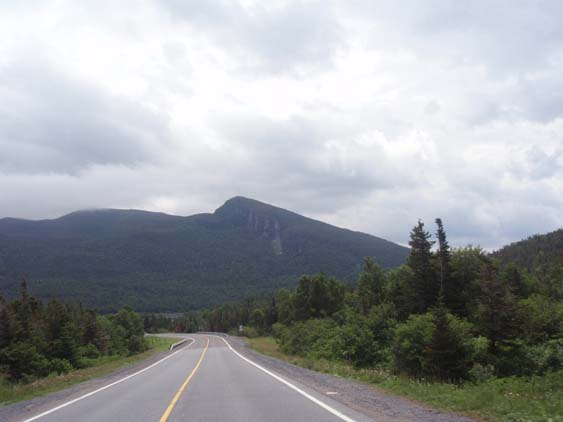 |
|
|
then up and over
another rise and we are alongside the water again. |
|
|
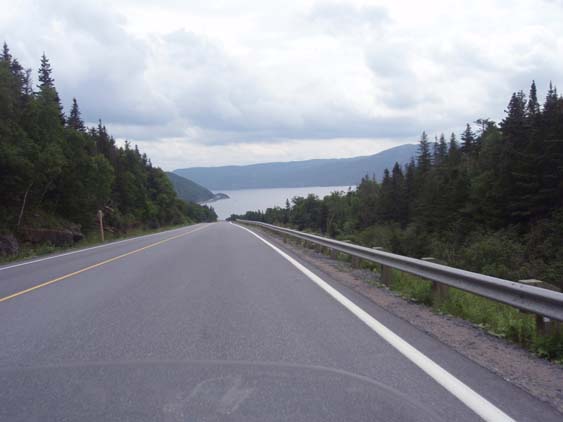 |
|
|
Another place Jim
encouraged us to visit is Woody Point and Trout River. Highway 431 is our
magic carpet to get there. |
|
|
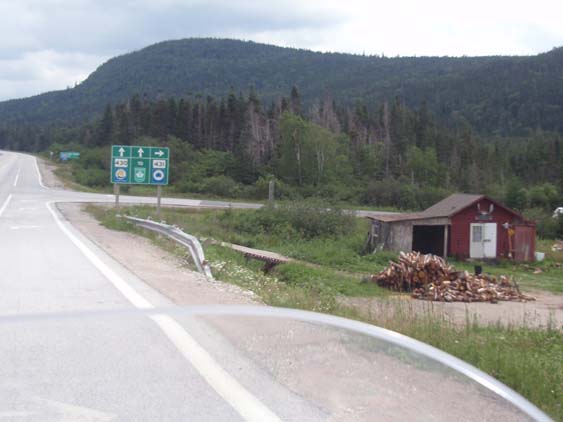 |
|
|
In the distance,
I can see patches of snow gracing some of the mountain tops. |
|
|
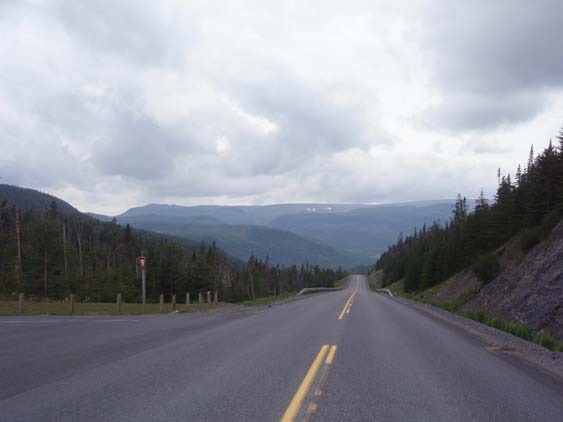 |
|
|
Further along, a
lonely little skiff sits patiently in the water for it's next adventure. |
|
|
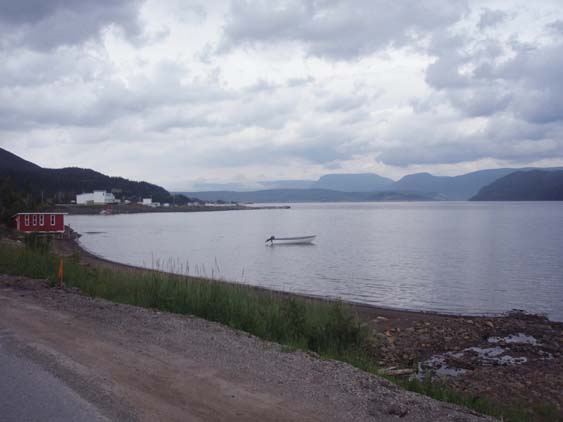 |
|
|
The snow patches
let me know that those peaks are a lot taller than they appear from my seat. |
|
|
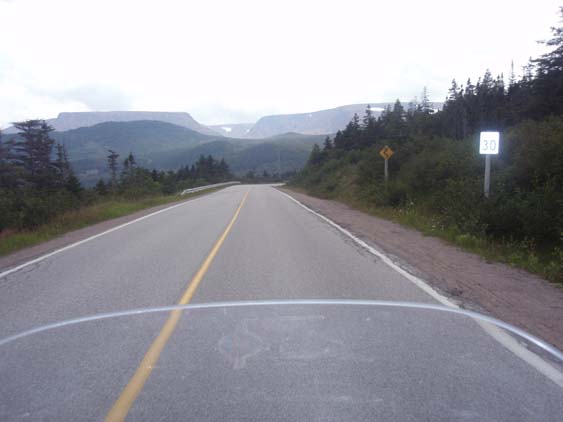 |
|
|
It's beautiful run
and once again I'm thankful for local knowledge that sent us this way. If
Jim had not told us about it, we would not have had a reason to come back
here. |
|
|
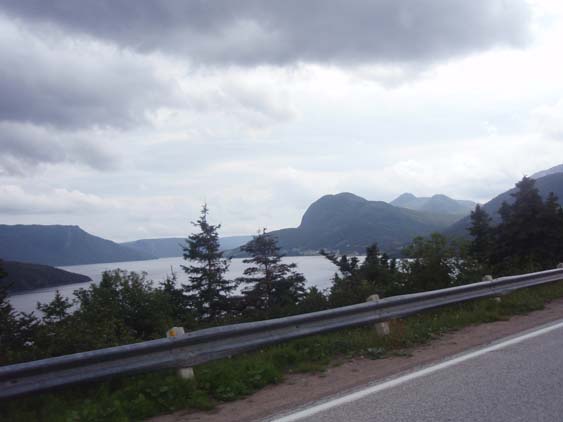 |
|
|
Then we come upon one of the
stranger sites we will see in Newfoundland, called 'The
Tablelands'. On one side of the road, it is green and fertile
with plenty of vegetation. Right across the road it is a barren wasteland
where little grows. The official explanation is -
This is due to the ultramafic
rock – peridotite – which makes up the Tablelands. It is thought
to originate in the Earth's mantle and was forced up from the depths during
a plate collision. Peridotite lacks some of the usual nutrients required
to sustain most plant life and has a toxic quality, hence its barren appearance.
Peridotite is also high in iron, which accounts for its brownish color
(rusted color). Underneath this weathered zone, the rock is really a dark
green color.
|
|
|
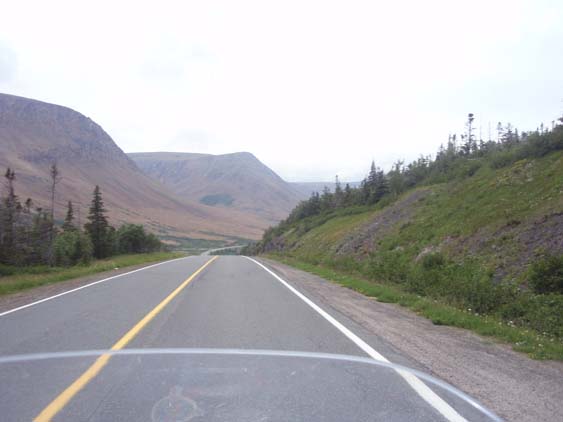 |
|
|
Soon we arrive at
Trout River proper where we will take a little loop through the area. |
|
|
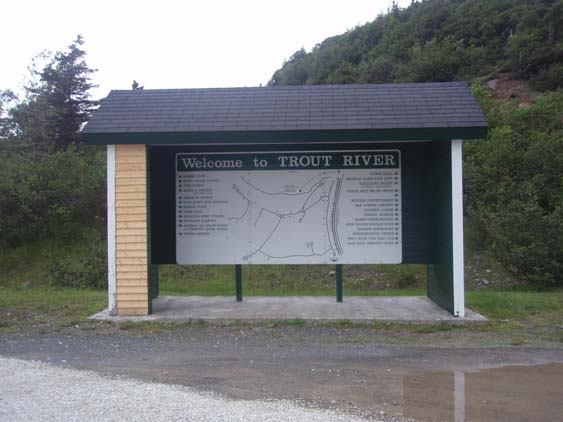 |
|
|
In the village,
I spy a lighthouse and try to figure just how we can ride to it. |
|
|
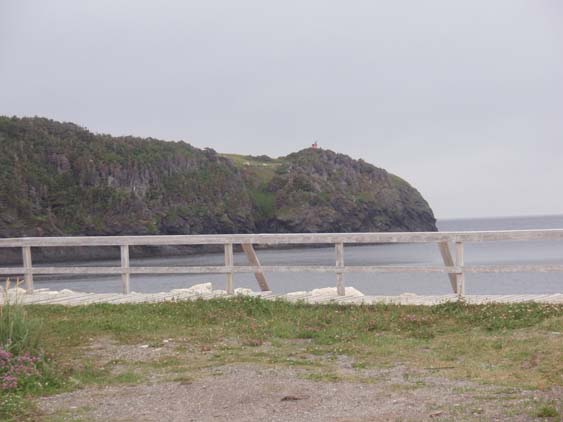 |
|
|
I see a sign that
says 'Lighthouse Road' so I figure this must be the way. |
|
|
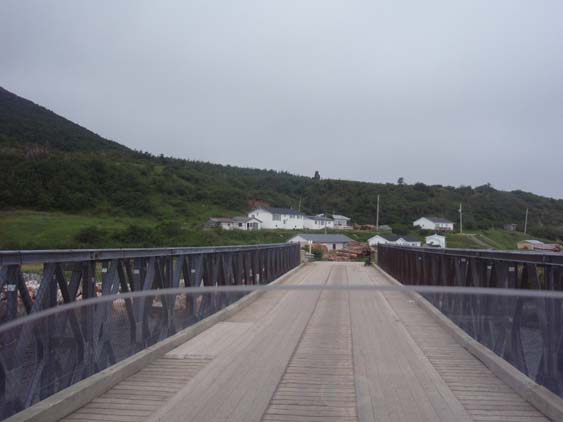 |
|
|
As it turns out,
the road dead ends and you have to take a goat trail to get to the lighthouse.
|
|
|
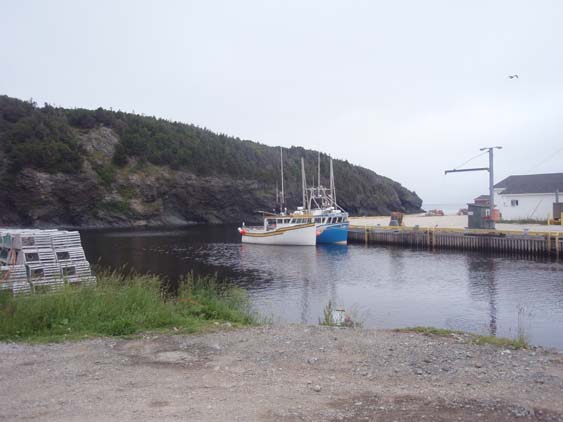 |
|
|
And Mr. Cat, who
appears to be the local inspector, does not think that we have the proper
permits to become goats though he does find that we do resemble their fragrance
at this point. So we defer to his ruling, wish him well and head the other
way. |
|
|
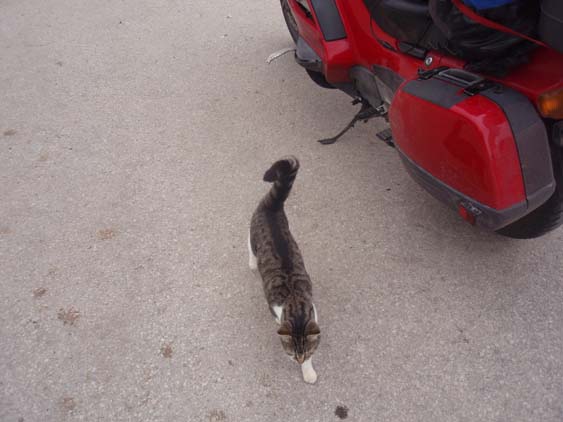 |
|
|
Some local kids
are enjoying nice summer dive off the bridge. You have to admire their spirit
and that they are actually out doing stuff instead of staying at home playing
video games or fussing with their phones. |
|
|
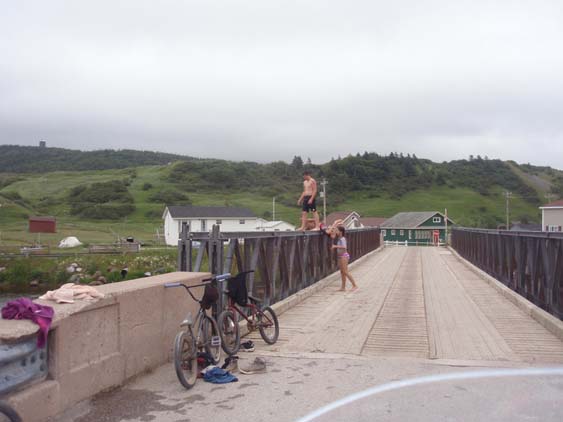 |
|
|
But we've got Cornerbrook
to make for the evening and it looks like storms are in our path. |
|
|
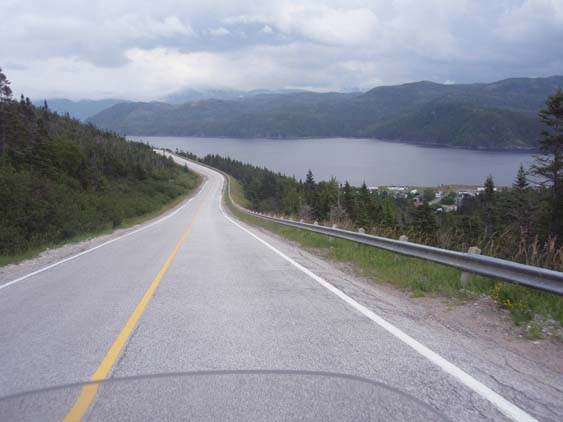 |
|
|
And off to our right
it sure don't look good for the home team. |
|
|
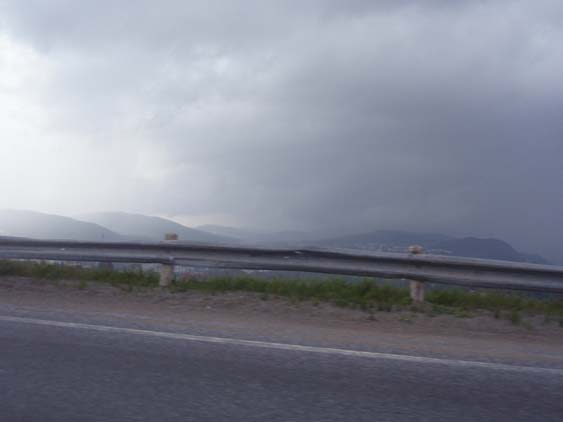 |
|
|
I am glad when we
see this sign and the bottom has not fallen out yet. |
|
|
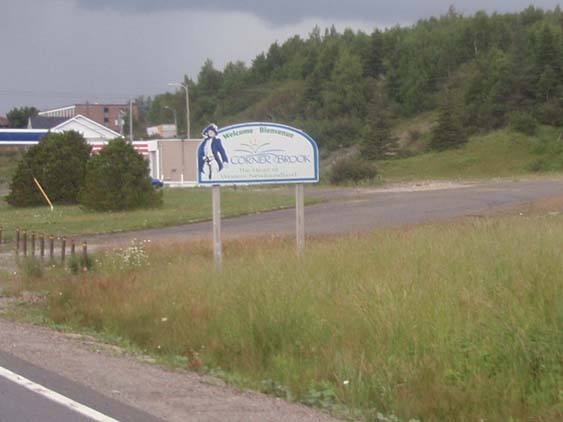 |
|
|
Alain guides us through some
strange construction and we finally arrive at the Glynmill
Inn just as the rain starts. The Inn has some very interesting
history -
Early in the 1920’s,
the Armstrong-Whitworth Company Limited of England decided that their
senior staff required living quarters that would enable them to feel at
home while they were supervising construction of what was, up to that
time, the largest project ever undertaken in the history of paper making.
In 1923, Mr. Andrew Cobb,
a Halifax architect designed the Tudor-Style “Staff House” and
in his honor, the street leading to it was named Cobb Lane.
On May 16, 1924, Mr.
Bill Cossitt and three employees of Pickering & Watson, water and
sewage contractors from Halifax signed the register. Three weeks later,
the first dinner was served.
Glynmill Inn, the Newfoundland
Pulp and Paper Company’s executive guesthouse, was designed to be
a hotel with a lounge, or lobby, a dining room and the guest rooms. On
June 30, 1924, Sir Glyn West, Chairman of Armstrong-Whitworth Company
Limited, officially opened the hotel.
The amenities provided
were very advanced for the period. There were two dining areas, The Carriage
Room and a special private dining room for VIP’s. There were also
two bars, The Tudor Room and a special club called Blomidon, for members
only. The tennis courts at the rear of the building were later replaced
with a parking lot and a well-stocked livery. There were modern conveniences
such as a laundry and vacuum cleaners. Since the proprietors also owned
the source of power at Deer Lake, there was an apparent inexhaustible
supply of electricity.
|
|
|
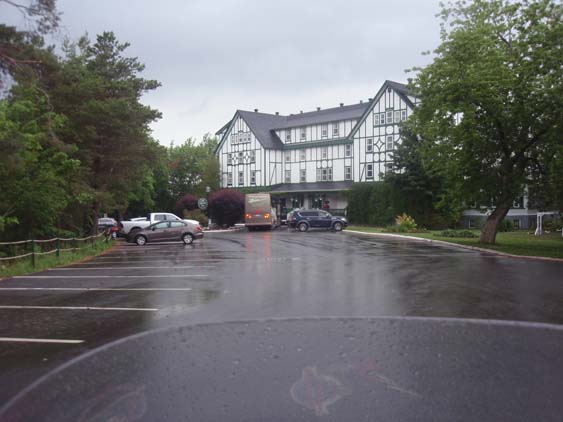 |
|
|
We manage to get
in before the rain really starts, and I bed down Frost for the wet evening. |
|
|
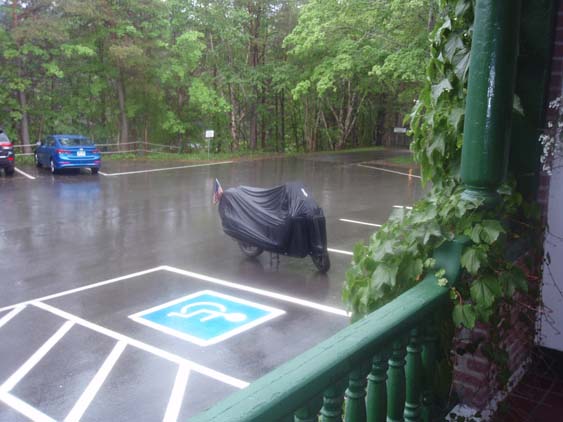 |
|
|
There is a restaurant
inside the inn, so we take advantage of it. I go for some more seafood chowder
and a baked potato as I am not really very hungry. |
|
|
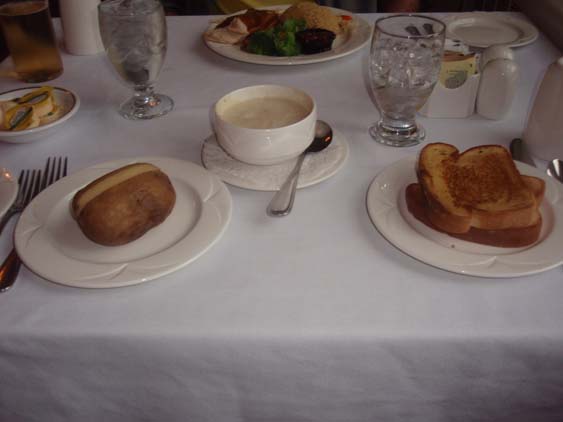 |
|
|
Alain decides that
a little sweetening is in order so he gets some sort of lemon pie thingy. |
|
|
 |
|
|
Not wanting to be
a slacker, I head straight for the chocolate cake ... |
|
|
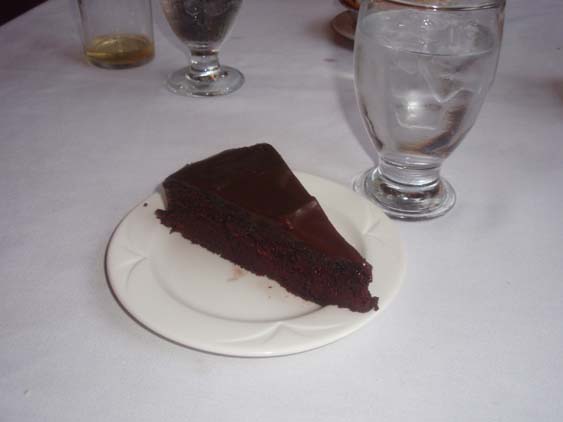 |
|
|
which I effectively
dispatch with great vigor. |
|
|
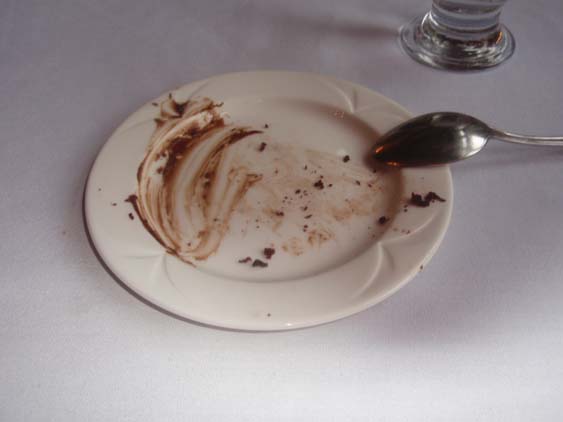 |
|
|
And Alain holds
forth on his own and manages to come out the victor on his side of the table. |
|
|
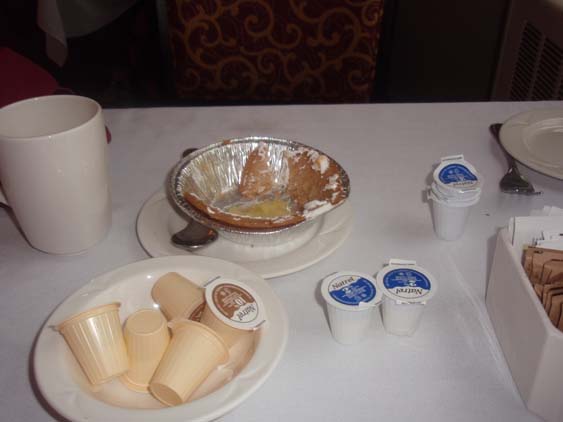 |
|
|
It's been a good
day of riding and tomorrow holds even more. With this noodling around in
my head and the sounds of abundant rain hitting the window, I am quickly
on my way to Slumberland. |
|
|
|
|
|
|
|
|
|
|
| |
|
|
| |
|
|





















































